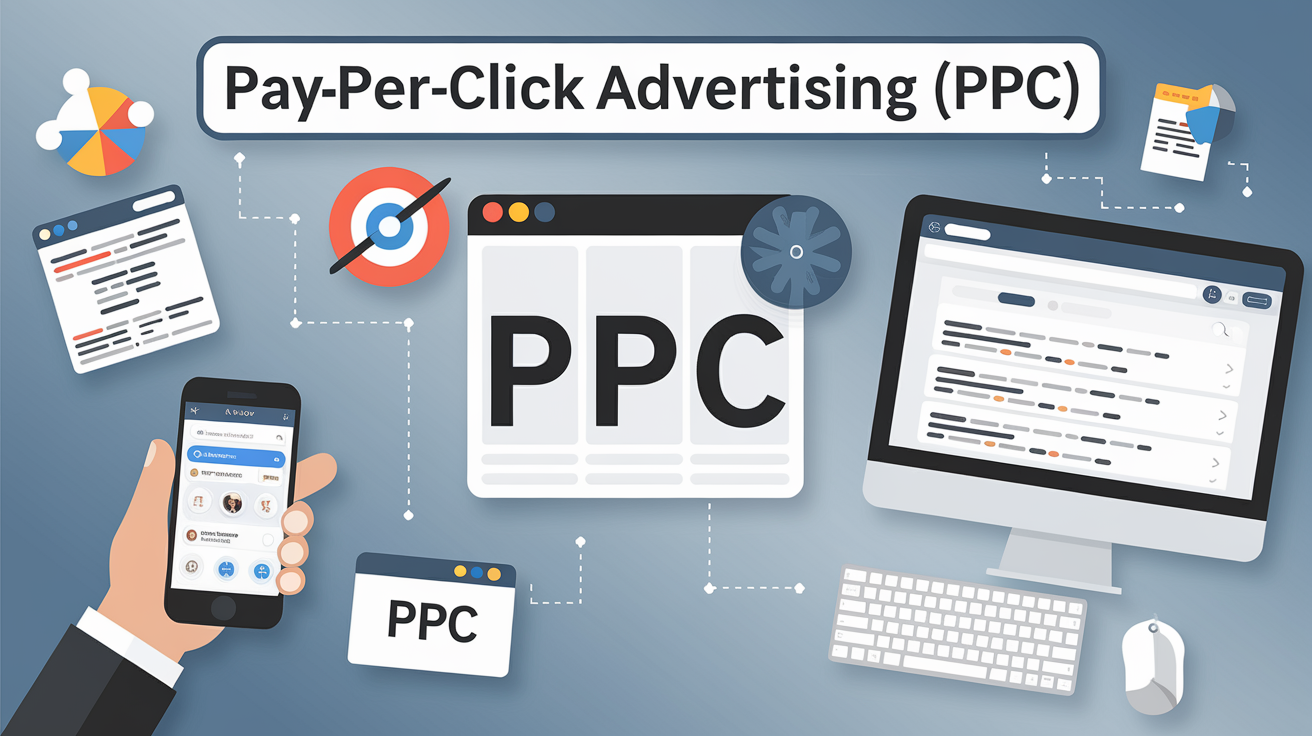Pay-Per-Click Advertising (PPC)
Pay-Per-Click Advertising (PPC): A Comprehensive Guide
Introduction
In the ever-evolving landscape of digital marketing, businesses strive for immediate and measurable results. Pay-Per-Click (PPC) advertising emerges as an invaluable tool, enabling brands to capture targeted traffic, drive conversions, and generate substantial revenue. Unlike organic strategies, PPC offers instant visibility, allowing advertisers to bid on keywords and place their ads at the top of search engine results pages (SERPs) and other digital platforms. This article delves into the intricacies of PPC, its strategic advantages, and best practices to maximize its effectiveness.
Understanding the Core of PPC Advertising
PPC operates on a bidding model where advertisers pay a fee each time their ad is clicked. It’s akin to purchasing visits rather than relying solely on organic reach. While Google Ads dominates the space, PPC campaigns extend across platforms such as Bing Ads, Facebook Ads, LinkedIn Ads, and Amazon Advertising. The efficacy of a PPC campaign hinges on meticulous keyword research, compelling ad creatives, and precise audience targeting.
The PPC Auction Model
Search engines utilize a dynamic auction system to determine which ads appear in the coveted top spots. Factors influencing ad placement include:
- Bid Amount: The maximum amount an advertiser is willing to pay per click.
- Quality Score: Google assigns a score based on ad relevance, click-through rate (CTR), and landing page experience.
- Ad Rank: A composite score derived from the bid amount and Quality Score, dictating the ad’s position on the SERP.
Types of PPC Advertising
1. Search Advertising
This is the most common PPC format, where advertisers bid on keywords to appear on search engine results pages. These text-based ads often feature compelling headlines, descriptions, and sitelinks to drive engagement.
2. Display Advertising
Display ads appear across Google Display Network (GDN) and other partner sites in the form of banners, images, and interactive media. They are particularly effective for brand awareness and retargeting campaigns.
3. Shopping Ads
E-commerce businesses leverage shopping ads to showcase product listings directly within search results. Google Shopping and Amazon Sponsored Products are prime examples.
4. Social Media Advertising
Platforms like Facebook, Instagram, LinkedIn, and Twitter allow brands to run PPC campaigns targeting specific demographics, interests, and behaviors.
5. Video Advertising
YouTube Ads and other video platforms enable businesses to capture audience attention through engaging video content. These ads can be skippable, non-skippable, or displayed as bumper ads.
6. Remarketing Campaigns
Remarketing involves targeting users who have previously interacted with a website or app, nudging them towards conversion through tailored ads.

Crafting a High-Performance PPC Campaign
1. Keyword Research and Selection
Choosing the right keywords is the foundation of a successful PPC strategy. Utilize tools like Google Keyword Planner, SEMrush, and Ahrefs to identify high-intent keywords with optimal competition and search volume.
- Broad Match: Captures variations of the keyword, maximizing reach.
- Phrase Match: Targets searches containing the keyword in a specific order.
- Exact Match: Triggers ads for precise keyword searches, ensuring relevance.
- Negative Keywords: Filters out irrelevant traffic, preventing wasted ad spend.
2. Compelling Ad Copy
A well-crafted ad copy must be clear, engaging, and action-oriented.
- Headline: Capture attention with a value-driven message.
- Description: Highlight unique selling points and benefits.
- Call-to-Action (CTA): Encourage users to take the desired action, such as “Get a Free Quote” or “Shop Now.”
3. Optimized Landing Pages
Driving traffic is only half the battle; converting visitors is the ultimate goal. An optimized landing page should:
- Align with the ad’s message for consistency.
- Feature a clear and compelling CTA.
- Load quickly and be mobile-friendly.
- Minimize distractions and focus on conversion elements.
4. Budgeting and Bid Strategies
Advertisers must allocate budgets wisely and adopt bidding strategies that align with their goals:
- Manual CPC: Allows full control over bids.
- Enhanced CPC: Adjusts bids based on likelihood of conversion.
- Target CPA: Sets bids to achieve a specific cost per acquisition.
- Target ROAS: Focuses on maximizing return on ad spend.
5. Tracking and Performance Analysis
Continuous monitoring is crucial to optimizing PPC campaigns. Utilize tools like Google Analytics and conversion tracking to measure performance metrics:
- CTR (Click-Through Rate): Measures ad engagement.
- Conversion Rate: Evaluates the effectiveness of landing pages.
- Quality Score: Helps improve ad relevance.
- Return on Ad Spend (ROAS): Determines profitability.
Common PPC Mistakes to Avoid
1. Ignoring Negative Keywords
Failing to exclude irrelevant search queries can drain budgets and reduce campaign efficiency.
2. Overlooking Mobile Optimization
With a significant portion of users browsing on mobile devices, ads and landing pages must be mobile-friendly.
3. Poorly Structured Ad Groups
Grouping unrelated keywords in a single ad group diminishes ad relevance, lowering Quality Scores and increasing costs.
4. Neglecting A/B Testing
Continuous experimentation with ad creatives, CTAs, and landing pages is essential for campaign improvement.
The Future of PPC Advertising
With AI-driven automation, voice search, and evolving consumer behaviors, PPC is undergoing a transformation. Smart bidding, predictive analytics, and AI-generated ad copies are revolutionizing campaign management, making PPC more efficient than ever.
Conclusion
Pay-Per-Click advertising remains an indispensable component of digital marketing, offering businesses an unparalleled opportunity to drive targeted traffic and achieve measurable results. A well-executed PPC strategy, fueled by data-driven insights and continuous optimization, can yield substantial returns on investment. By mastering keyword selection, ad creativity, and audience targeting, brands can harness the full potential of PPC advertising and stay ahead in the competitive digital landscape.


Post Comment